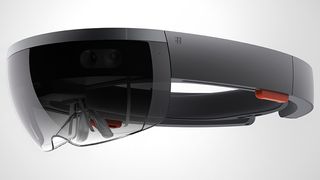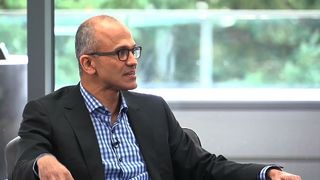Microsoft shows it's blazing new trails at the Ignite conference
Redmond lays out its burning ambitions
Microsoft also made a big deal out of HoloLens – its new holographic headset which overlays virtual environments onto real ones – at Build, and its persistent influence hovered over Ignite. The potential business applications, the company stressed, are enormous and, you guessed it, it's underpinned by Windows 10 meaning that every application or use case of the new operating system is available.

The fact that Microsoft is even mentioning a device that would usually be seen as an early adopter plaything to a room of serious professionals, all managing large enterprise budgets, shows just how committed the company is to the programme. Nadella must believe that computing is going to move beyond the keyboard and screen, into a new dimension and, at present, that vision is driven by Microsoft.
Threat analytics
Microsoft is still sticking to the present, however. HoloLens and all of its initiatives are nice but sit firmly in the future, and are obviously not available to the enterprises of today. Several things were shown off on stage, one of them being Advanced Threat Analytics (ATA) which is based on the technology acquired in Redmond's recent purchase of Aorato, a deal which cost $200 million (around £130 million, AU$250 million).
The software "identifies security breaches and threats [based on] behavioural analysis and machine learning" and flags them up to a system administrator. Things like "impossible distance jumps" (i.e. logging in from the USA and then, twenty minutes later, logging in from North Korea) and compromised accounts becoming available for purchase on the 'dark net'. There is also a new focus on security within Office 365, especially around access rights to various documents. If you don't want junior employees nosing around legally sensitive reports then simply lock them down so only a chosen few can view them, and it's that simple.
Tucked away in its announcement of an extension to the capabilities of Microsoft's Azure Stack is a new management suite called Microsoft Operations Management Suite (OMS), which works with "any hybrid clouds" and that includes Azure, Amazon Web Services, Linux, VMware and more. Microsoft describes this as "next-generation hybrid cloud" and it's clear to see that it innovates heavily on what has come before it, providing solutions for IT departments that will make their lives easier. This announcement comes in tandem with a preview of Windows Server 2016 which enterprises can try and submit feedback on, just like Windows 10.

Forging a new path
It is clear, from Convergence to Build to Ignite, that Microsoft is moving in a fresh direction away from a company solely focused on already strong businesses to new paths. A New York Times article entitled 'Microsoft (Yes, Microsoft) Has a Far-Out Vision' details the first time Nadella tried on HoloLens and immediately saw it as the future. According to Todd Holmdahl, a 'Microsoft hardware guru': "[Nadella] said right away, 'This is something that we're going to do. We are going to create a new product category, and this is the type of thing that Microsoft should be working on.'"
This kind of forward thinking attitude is, in many ways, reminiscent of the late Apple CEO Steve Jobs who saw potential in contemporarily crazy technology and went on to define how we use mobile devices today. Could Microsoft be the company that does that going forward? From what we have seen at Ignite, the answer is starting to look like yes.
Are you a pro? Subscribe to our newsletter
Sign up to the TechRadar Pro newsletter to get all the top news, opinion, features and guidance your business needs to succeed!
Max Slater-Robins has been writing about technology for nearly a decade at various outlets, covering the rise of the technology giants, trends in enterprise and SaaS companies, and much more besides. Originally from Suffolk, he currently lives in London and likes a good night out and walks in the countryside.












